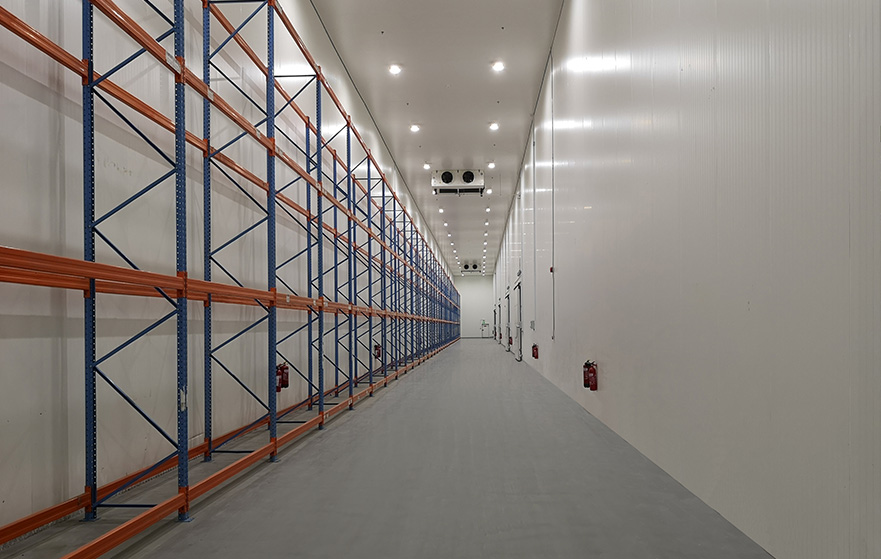
Overview
Industrial Refrigeration is mostly used for large scale projects that require a certain temperature range to protect their products from spoilage or damage. CGS can proudly acclaim for building up Industrial Refrigeration Facilities for leading food processing and distribution forms in the Kingdom of Saudi Arabia.
Industrial refrigeration applications are typically used in places like cold food storage, dairy processing, Beverage production,Banana ripping room, Potato coldstores, Ice rinks and heavy industry, these sorts of places. These are large scale cooling systems. Ammonia refrigeration is one of the older types of refrigeration that is still used today. While the average person doesn't realize it, just about all food and drinks that are purchased have been kept cold using ammonia refrigeration at some point along the way. This is because it is a reliable and efficient refrigerant with years of safe, proven utility.
Features
- Preferred choice of Industrial Refrigeration
- Reduced cost of procurement,
- Increased efficiency at cool temperatures
- Environment friendly refrigerant
- Lower installation cost
- Energy efficient system
- Reducing Cost of ownership
Applications
- Food & Beverage | Dairy Industries | Fruits & Vegetables | Fish Processing | Bakery Industry |
- General Food Processing | Meat Processing | Poultry Processing | Storage & Distribution |
- Pharmaceuticals | Oil & Gas
Why Use Ammonia as a Refrigerant
Ammonia occurs naturally in the environment, it’s available in abundant amounts. It has an ozone depletion rating of zero and a global warming potential of less than 1. If we compare that to other common refrigerants such as R134a with a GWP of 1,430 and then R404A which has a GWP of 3,922 you can see why ammonia is very beneficial to use. Ammonia is also cheap to produce and energy efficient to use. it has the capability to absorb large amounts of heat as it evaporates. That’s a really important aspect for a refrigerant to be of use, it also means the pipes and components can be thinner and smaller.
Ammonia is toxic however and can also be flammable at certain concentrations. Most refrigerants are odorless but ammonia gives off a very sour smell so it’s easily noticed if a leak occurs. If ammonia leaks it will react with the carbon and water in the air to form ammonium bicarbonate which is a harmless washed compound.



